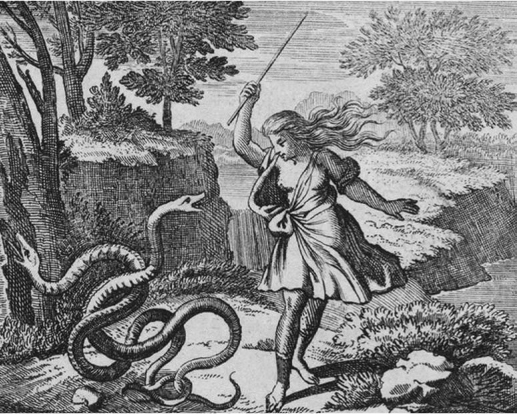Roman MythologyOvid and the Metamorphoses |
What is Ovid’s myth of Tiresias, and how does he connect it to the Narcissus and Echo myth? |
The ancient seer Tiresias, well known from the Greek tragedy of Oedipus, was called upon to settle an argument between Jupiter (Jove) and his wife Juno over whether men or women gain more pleasure from sex. Tiresias was the perfect person to choose because he had once been transformed into a woman as a punishment for disturbing two copulating snakes and had experienced sex in both of his gender embodiments.
When Tiresias took Jupiter’s side, agreeing that women had more pleasure in sex, Juno became angry and blinded him. One day the blind seer was asked whether a beautiful baby, Narcissus, would have a long life. His answer, like those of most soothsayers was ambiguous: “Only if he does not know himself.” Girls fell in love with the boy as he grew. One such girl was the beautiful nymph Echo, who had once helped Jupiter trick Juno so he could be with a lover and as a punishment had been deprived by Juno of her ability to speak. She could only “echo” the last few words of the speech of others. Echo loved Narcissus, but the boy haughtily refused her. Making his way to a pond he caught sight of a face in the water, actually, of course, a reflection—that is, echo—of his own face. Falling in love with that unreachable face he withered away and eventually was transferred into a narcissus flower. For our modern psychologically oriented world, he has become a symbol of a dangerous psychological condition that prevents normal interpersonal communication—that is, narcissism.

Tiresias is turned into a woman after hitting two snakes in the midst of copulating, as shown in this circa 1690 engraving.
